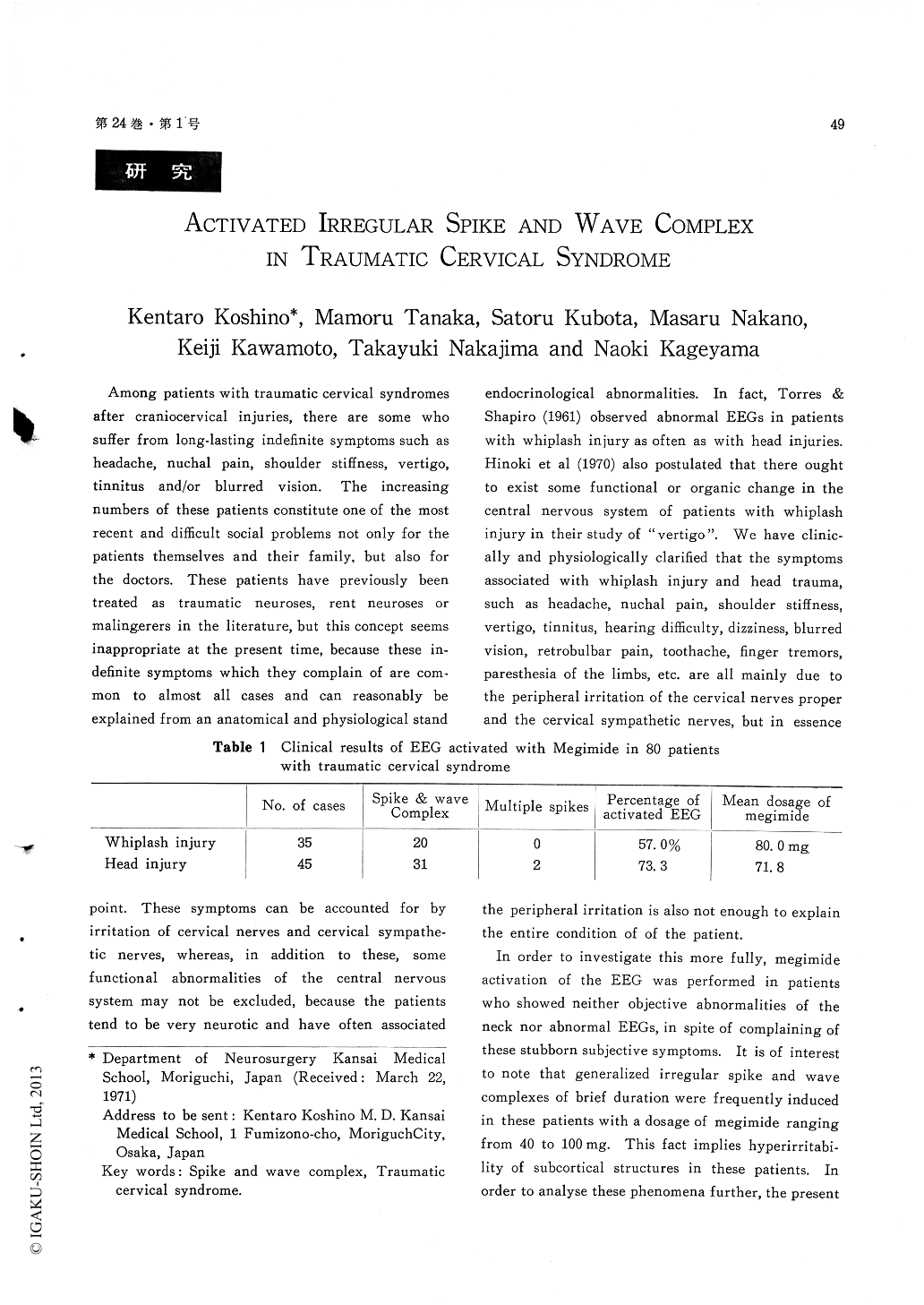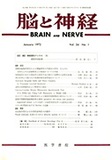- 有料閲覧
- 文献概要
- 1ページ目
Among patients with traumatic cervical syndromesafter craniocervical injuries, there are some whosuffer from long-lasting indefinite symptoms such asheadache, nuchal pain, shoulder stiffness, vertigo,tinnitus and/or blurred vision. The increasingnumbers of these patients constitute one of the mostrecent and difficult social problems not only for thepatients themselves and their family, but also forthe doctors. These patients have previously beentreated as traumatic neuroses, rent neuroses ormalingerers in the literature, but this concept seemsinappropriate at the present time, because these in—definite symptoms which they complain of are com—mon to almost all cases and can reasonably beexplained from an anatomical and physiological standendocrinological abnormalities. In fact, Torres &Shapiro (1961) observed abnormal EEGs in patientswith whiplash injury as often as with head injuries.Hinoki et al (1970) also postulated that there oughtto exist some functional or organic change in thecentral nervous system of patients with whiplashinjury in their study of "vertigo". We have clinic—ally and physiologically clarified that the symptomsassociated with whiplash injury and head trauma,such as headache, nuchal pain, shoulder stiffness,vertigo, tinnitus, hearing difficulty, dizziness, blurredvision, retrobulbar pain, toothache, finger tremors,paresthesia of the limbs, etc. are all mainly due tothe peripheral irritation of the cervical nerves properand the cervical sympathetic nerves, but in essencepoint. These symptoms can be accounted for byirritation of cervical nerves and cervical sympathe—tic nerves, whereas, in addition to these, somefunctional abnormalities of the central nervoussystem may not be excluded, because the patientstend to be very neurotic and have often associatedthe peripheral irritation is also not enough to explainthe entire condition of of the patient.
In order to investigate this more fully, megimideactivation of the EEG was performed in patientswho showed neither objective abnormalities of theneck nor abnormal EEGs, in spite of complaining ofthese stubborn subjective symptoms. It is of interestto note that generalized irregular spike and wavecomplexes of brief duration were frequently inducedin these patients with a dosage of megimide rangingfrom 40 to 100 mg. This fact implies hyperirritabi—lity of subcortical structures in these patients. Inorder to analyse these phenomena further, the presentstudy was attempted to investigate clinically and experimentally how to relate the subcortical hyper-excitability to the irritation of the cervical sym-pathetic nerves.

Copyright © 1972, Igaku-Shoin Ltd. All rights reserved.


